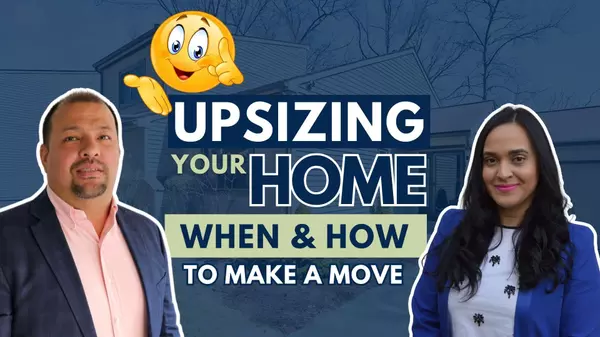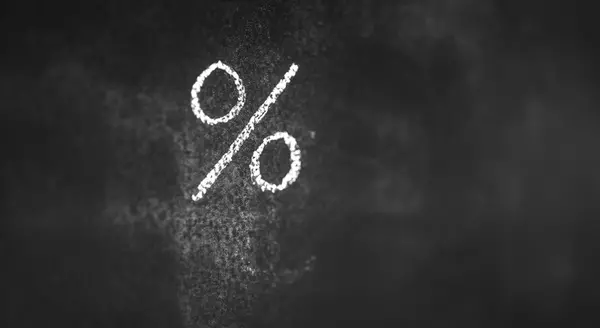
3 Graphs To Show This Isn’t a Housing Bubble
With all the headlines and buzz in the media, some consumers believe the market is in a housing bubble. As the housing market shifts, you may be wondering what’ll happen next. It’s only natural for concerns to creep in that it could be a repeat of what took place in 2008. The good news is, there’s concrete data to show why this is nothing like the last time.There’s a Shortage of Homes on the Market Today, Not a SurplusThe supply of inventory needed to sustain a normal real estate market is approximately six months. Anything more than that is an overabundance and will causes prices to depreciate. Anything less than that is a shortage and will lead to continued price appreciation.For historical context, there were too many homes for sale during the housing crisis (many of which were short sales and foreclosures), and that caused prices to tumble. Today, supply is growing, but there’s still a shortage of inventory available.The graph below uses data from the National Association of Realtors (NAR) to show how this time compares to the crash. Today, unsold inventory sits at just a 3.0-months’ supply at the current sales pace.One of the reasons inventory is still low is because of sustained underbuilding. When you couple that with ongoing buyer demand as millennials age into their peak homebuying years, it continues to put upward pressure on home prices. That limited supply compared to buyer demand is why experts forecast home prices won’t fall this time.Mortgage Standards Were Much More Relaxed During the CrashDuring the lead-up to the housing crisis, it was much easier to get a home loan than it is today. The graph below showcases data on the Mortgage Credit Availability Index (MCAI) from the Mortgage Bankers Association (MBA). The higher the number, the easier it is to get a mortgage.Running up to 2006, banks were creating artificial demand by lowering lending standards and making it easy for just about anyone to qualify for a home loan or refinance their current home. Back then, lending institutions took on much greater risk in both the person and the mortgage products offered. That led to mass defaults, foreclosures, and falling prices.Today, things are different, and purchasers face much higher standards from mortgage companies. Mark Fleming, Chief Economist at First American, says:“Credit standards tightened in recent months due to increasing economic uncertainty and monetary policy tightening.” Stricter standards, like there are today, help prevent a risk of a rash of foreclosures like there was last time.The Foreclosure Volume Is Nothing Like It Was During the CrashThe most obvious difference is the number of homeowners that were facing foreclosure after the housing bubble burst. Foreclosure activity has been on the way down since the crash because buyers today are more qualified and less likely to default on their loans. The graph below uses data from ATTOM Data Solutions to help tell the story:In addition, homeowners today are equity rich, not tapped out. In the run-up to the housing bubble, some homeowners were using their homes as personal ATMs. Many immediately withdrew their equity once it built up. When home values began to fall, some homeowners found themselves in a negative equity situation where the amount they owed on their mortgage was greater than the value of their home. Some of those households decided to walk away from their homes, and that led to a wave of distressed property listings (foreclosures and short sales), which sold at considerable discounts that lowered the value of other homes in the area.Today, prices have risen nicely over the last few years, and that’s given homeowners an equity boost. According to Black Knight:“In total, mortgage holders gained $2.8 trillion in tappable equity over the past 12 months – a 34% increase that equates to more than $207,000 in equity available per borrower. . . .”With the average home equity now standing at $207,000, homeowners are in a completely different position this time.Bottom LineIf you’re worried we’re making the same mistakes that led to the housing crash, the graphs above should help alleviate your concerns. Concrete data and expert insights clearly show why this is nothing like the last time.

3 gráficas para mostrar que esto no es una burbuja de la vivienda
Con todos los titulares y el zumbido en los medios de comunicación, algunos consumidores creen que el mercado de la vivienda está en una burbuja. A medida que el mercado cambia, es posible que se pregunte qué sucederá después. Es natural que se cuelen preocupaciones de que podría ser una repetición de lo que sucedió en 2008. La buena noticia es que hay datos concretos que muestran por qué esto no se parece en nada a la última vez.Hay una escasez de casas en el mercado hoy, no un excedenteEl suministro de inventario necesario para sostener un mercado normal de bienes raíces es de aproximadamente seis meses. Cualquier cosa más que eso es una sobreabundancia y hará que los precios deprecien. Cualquier cosa menos que eso es una escasez y conducirá a una apreciación continua de los precios.Para un contexto histórico, hubo demasiadas casas en venta durante la crisis de la vivienda (muchas de las cuales fueron ventas por menos de la deuda y ejecuciones hipotecarias), y eso hizo que los precios cayeran. Hoy, la oferta está aumentando, pero todavía hay una escasez de inventario disponible.La siguiente gráfica utiliza datos de la Asociación Nacional de Realtors (NAR por sus siglas en inglés) para mostrar cómo se compara esta vez con el desplome. Hoy, el inventario disponible se encuentra con solo un suministro para 3.0 meses al ritmo de venta actual.Una de las razones por las que el inventario sigue siendo bajo es debido a la constante subconstrucción. Cuando se combina eso con la demanda continua de los compradores a medida que los millennials entran en sus años del auge de compra de viviendas, esto continúa ejerciendo una presión al alza sobre los precios de las casas. Esa oferta limitada en comparación con la demanda de los compradores es la razón por la cual los expertos pronostican que los precios de las casas no caerán esta vez.Las normas hipotecarias eran menos estrictas durante el colapsoDurante el período previo a la crisis de la vivienda, era mucho más fácil obtener un préstamo hipotecario de lo que es hoy. La siguiente gráfica muestra datos del Índice de disponibilidad del crédito hipotecario (MCAI por sus siglas en inglés) de la Asociación de Banqueros Hipotecarios (MBA por sus siglas en inglés). Cuanto mayor sea el número, más fácil será obtener una hipoteca.Hasta 2006, los bancos estaban creando una demanda artificial al reducir las normas para solicitar un préstamo y facilitar que casi cualquier persona calificara para un préstamo hipotecario o refinanciara su casa actual. En aquel entonces, las instituciones crediticias asumían un riesgo mucho mayor tanto en la persona como en los productos hipotecarios ofrecidos. Eso llevó a incumplimientos masivos, ejecuciones hipotecarias y caída de los precios.Hoy, las cosas son diferentes, y los compradores se enfrentan a normas mucho más altas de las compañías hipotecarias. Mark Fleming, Economista Principal de First American, dice:“Los estándares de crédito se reforzaron en los últimos meses debido a la creciente incertidumbre económica y el endurecimiento de la política monetaria”. Las normas más estrictas, como los que hay hoy, ayudan a prevenir el riesgo de una erupción de ejecuciones hipotecarias como la última vez.El volumen de ejecuciones hipotecarias no se parece en nada a lo que era durante el desplomeLa diferencia más obvia es el número de propietarios que se enfrentaban a una ejecución hipotecaria después del estallido de la burbuja de la vivienda. La actividad de las ejecuciones hipotecarias ha estado disminuyendo desde el desplome porque los compradores de hoy están más calificados y tienen menos probabilidades de incumplir con sus préstamos. La siguiente gráfica utiliza datos de ATTOM Data Solutions para ayudar a contar la historia:Además, los propietarios de viviendas de hoy son ricos en plusvalía, no utilizada. En el período previo a la burbuja de la vivienda, algunos propietarios estaban utilizando sus casas como cajeros automáticos personales. Muchos retiraron inmediatamente su plusvalía una vez que se acumuló. Cuando el valor de las casas comenzó a caer, algunos propietarios se encontraron en una situación de plusvalía negativa en la que la cantidad que debían en su hipoteca era mayor que el valor de su casa. Algunos de esos hogares decidieron abandonar sus casas, y eso llevó a una ola de propiedades en subasta para la venta (ejecuciones hipotecarias y ventas por menos de la deuda), que se vendieron con descuentos considerables y que redujeron el valor de otras casas en el área.Hoy, los precios han aumentado muy bien en los últimos años, y eso ha dado a los propietarios de casas un alza de plusvalía. Según Black Knight:“En total, los titulares de hipotecas ganaron $2.8 billones en plusvalía negociable en los últimos 12 meses, un aumento del 34 % que equivale a más de $207,000 en plusvalía disponible por prestatario…”Con el promedio de la plusvalía de la vivienda ahora en $207,000, los propietarios están en una posición completamente diferente esta vez.En conclusión,Si le preocupa que estemos cometiendo los mismos errores que llevaron a la caída de la vivienda, las gráficas anteriores deberían ayudar a aliviar sus preocupaciones. Los datos concretos y las ideas de los expertos muestran claramente por qué esto no se parece en nada a la última vez.

What’s Causing Ongoing Home Price Appreciation?
If you’re thinking about making a move, you probably want to know what’s going to happen to home prices for the rest of the year. While experts say price growth will moderate due to the shifting market, ongoing appreciation is expected. That means home prices won’t fall. Here’s a look at two key reasons experts forecast continued price growth: supply and demand.While Growing, Housing Supply Is Still LowEven though inventory is increasing this year as the market moderates, supply is still low. The graph below helps tell the story of why there still aren’t enough homes on the market today. It uses data from the Census to show the number of single-family homes that were built in this country going all the way back to the 1970s.The blue bars represent the years leading up to the housing crisis in 2008. As the graph shows, right before the crash, homebuilding increased significantly. That’s because buyer demand was so high due to loose lending standards that enabled more people to qualify for a home loan.The resulting oversupply of homes for sale led to prices dropping during the crash and some builders leaving the industry or closing their businesses – and that led to a long period of underbuilding of new homes. And even as more new homes are constructed this year and in the years ahead, this isn’t something that can be resolved overnight. It’ll take time to build enough homes to meet the deficit of underbuilding that took place over the past 14 years.Millennials Will Create Sustained Buyer Demand Moving ForwardThe frenzy the market saw during the pandemic is because there was more demand than homes for sale. That drove home prices up as buyers competed with one another for available homes. And while buyer demand has moderated today in response to higher mortgage rates, data tells us demand will continue to be driven by the large generation of millennials aging into their peak homebuying years (see graph below):Odeta Kushi, Deputy Chief Economist at First American, explains: “. . . millennials continue to transition to their prime home-buying age and will remain the driving force in potential homeownership demand in the years ahead.”That combination of millennial demand and low housing supply continues to put upward pressure on home prices. As Bankrate says:“After all, supplies of homes for sale remain near record lows. And while a jump in mortgage rates has dampened demand somewhat, demand still outpaces supply, thanks to a combination of little new construction and strong household formation by large numbers of millennials.”What This Means for Home PricesIf you’re worried home values will fall, rest assured that experts forecast ongoing home price appreciation thanks to the lingering imbalance of supply and demand. That means home prices won’t decline.Bottom LineBased on today’s factors driving supply and demand, experts project home price appreciation will continue. It’ll just happen at a more moderate pace as the housing market continues its shift back toward pre-pandemic levels.
Categories
Recent Posts










